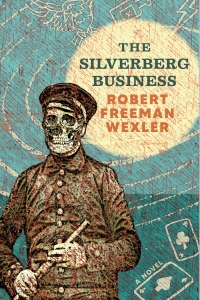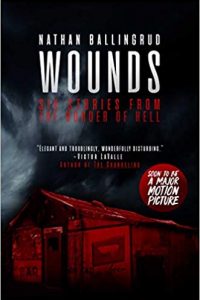Rich Horton reviews Short Fiction, May 2016
Analog 4/16
Asimov’s 3/16
F&SF 3-4/16
Lightspeed 4/16
Beneath Ceaseless Skies 3/3/16, 3/17/16
Galaxy’s Edge 3/16
 Analog leads off April with a fine story by Maggie Clark, ‘‘Seven Ways of Looking at the Sun-Worshippers of Yul-Katan’’. It’s told by a woman native to the planet Yul-Katan, where the people worship the sun. Having lost her faith following her father’s ‘‘ascension’’ to the station orbiting their sun, she got out, and now works as a researcher on another planet. When her team becomes embroiled (no pun intended!) in what seems to be a terrorist incident centered on the mysterious discovery of an ascended priest from Yul-Katan, much of the team is murdered, and the remainder escape on a lifeboat. The narrator, despite hints that she should just get on with her life, keeps investigating what happened, which leads inevitably to a return to Yul-Katan, a confrontation with her brother, and some more understanding of the situation there, and perhaps of the wider political situation in humanity’s star-spanning confederation. This is interesting and well told, and the overall background is pretty neat…. I did sense, though, that this is not a complete story, really, but part of something bigger.
Analog leads off April with a fine story by Maggie Clark, ‘‘Seven Ways of Looking at the Sun-Worshippers of Yul-Katan’’. It’s told by a woman native to the planet Yul-Katan, where the people worship the sun. Having lost her faith following her father’s ‘‘ascension’’ to the station orbiting their sun, she got out, and now works as a researcher on another planet. When her team becomes embroiled (no pun intended!) in what seems to be a terrorist incident centered on the mysterious discovery of an ascended priest from Yul-Katan, much of the team is murdered, and the remainder escape on a lifeboat. The narrator, despite hints that she should just get on with her life, keeps investigating what happened, which leads inevitably to a return to Yul-Katan, a confrontation with her brother, and some more understanding of the situation there, and perhaps of the wider political situation in humanity’s star-spanning confederation. This is interesting and well told, and the overall background is pretty neat…. I did sense, though, that this is not a complete story, really, but part of something bigger.
The March Asimov’s is one of the best magazine issues I’ve seen in some time. All three novelettes are very fine. Ted Kosmatka’s ‘‘The Bewilderness of Lions’’ and Dale Bailey’s ‘‘I Married a Monster from Outer Space’’ both seem pure examples of stories that use familiar tropes that are modest in scope quite well in service of more mundane concerns. Kosmatka’s story is about Caitlin, who consults for a political candidate as a kind of data miner. She is able to quite successfully predict unusual happenings that might affect the campaign, until someone seems to notice, and makes her an offer…. So far, so typical: a shadowy conspiracy running the world (I was reminded a bit of the film version of Philip Dick’s ‘‘The Adjustment Bureau’’), but Kosmatka gives Caitlin a powerful back story concerning her brother and ties it very effectively to her ultimate dilemma. Bailey’s story concerns Ruth, a poor woman working in a Walmart, who married the boy who got her pregnant. The child died, and they’re struggling in believable rural-poor ways: a burdensome hospital bill, dead end jobs, drinking, a marriage going nowhere. Then one day an alien comes into her Walmart, and can’t buy anything. Ruth feels sorry for him, and brings him home. Her husband is a mechanic (but stuck at a Quicky Lube)… maybe he can fix the spaceship? Or maybe she doesn’t want the alien to leave? Or maybe she wants to get away herself? The ending is predictable, a bit pat, but the story is nicely told and honest.
The third novelette, Dominica Phetteplace’s ‘‘Project Empathy’’, is really special – one of the best stories of the year (and it’s invigorating to have been able to write that three months in a row!) Maybe the reason I liked it best is that it uses its SF tropes both in service of speculation and in service of its characters. Bel is a teenaged girl from a poor near-future suburb of San Francisco. She works for Blue Cup, a restaurant. Because she’s an exceptional host, she gets a scholarship to a special school in the city and a chance to work for Blue Cup there. Her first day at school is illuminating: there’s intriguing speculation about schooling and about how restaurants work in this near future, as well as a plausible vision of the workings of privilege and a look at an interesting but terribly divided future society. All this is cool, but we slowly realize that what’s really interesting is the story’s narrative structure, the importance of the narrator, and even the narrator’s way of telling us the story. I won’t give any of that away, except to say that the story isn’t just about Bel – we care about her, but we care about the narrator too, and the ending opens up beautifully in leading us to that resolution.
I should also mention a couple of the shorter stories, at risk of shortchanging them a bit. Sunil Patel’s ‘‘A Partial List of Lists I Have Lost Over Time’’ is twisty fun, very short, about an evil genius and parallel worlds. And Ray Nayler’s ‘‘Do Not Forget Me’’ is a nicely multiply-framed story, set in Central Asia, in which a man tells his wife a story he heard from a poet about a slave raider and the strange wanderer he captures.
F&SF’s March/April issue has a strong novella from John P. Murphy, ‘‘The Liar’’. The narrator, Greg Kennedy, is a 50ish man living alone in New Hampshire. He has a nice enough life, and the new lady Pastor seems interesting and interested. And he’s a liar – which is to say, he lies about reality in a way that can change it – though only for small things, handyman-style repairs. That’s one fantastic element; the other concerns the statistically unlikely run of teenagers dying in accidents every November 5 for as long as anyone remembers. Further, Pastor Julie’s daughter is a teenager, and rebellious to boot: could she be at risk? Greg investigates, and uncovers some history about a crashed bomber. The story moves along nicely, its main strength being the comfortable voice and solid characters, as well as Greg’s interesting ability. I don’t think the resolution, or the integration of the one fantastical element with the other, quite works, but that’s a minor flaw in an enjoyable piece.
Best this issue is Cat Rambo’s ‘‘Red in Tooth and Cog’’, in which Renee, eating lunch in a park near work, has her phone stolen, and comes to realize that it was taken by an abandoned robot-creature. She becomes interested, and slowly, with the help of the park’s robot caretaker, puzzles out some of the secrets of the park’s robotic ecology. The invention is sometimes whimsical, often very affecting, at times beautiful – and to my mind quite original.
In Lightspeed I liked, well, all the stories in April. Carrie Vaughn’s ‘‘Origin Story’’ is a good superhero (or supervillain) story, in which the heroine recognizes the villain robbing the bank she’s at…. He was her boyfriend in high school. It goes kind of where you expect from there, quite nicely. ‘‘The Birth Will Take Place on a Mutually Acceptable Research Vessel’’, by Matthew Bailey, is about a woman pregnant with an alien’s baby, who is thoroughly upset that their baby is a subject of intense scientific scrutiny from both races. Again, it goes kind of where you expect, but that’s not necessarily a bad thing, and it gets there effectively. ‘‘The Knobby Giraffe’’ is Rudy Rucker being Rudy Rucker, playing with weird ideas about the structure of the universe, while his main character just wants her girlfriend back. A fun little piece. And my favorite this issue is the one that seemed most original to me, Nghi Vo’s ‘‘Dragon Brides’’, about an aging woman, a Queen, returning to the mountain where the dragon took her long ago (and from where her husband rescued her). Vo avoids the easy clichés, and tells a story of a woman I believed in, with an effective storytelling strategy (memories hosted in the dragon’s hoard) to open things up, and with an ending I expected, but that is earned.
March is science fantasy month at Beneath Ceaseless Skies, which I always like. There’s something about mixing SF and fantasy that to my mind brings forth ideas wilder and more colorful than either genre provides alone. The best, which is to say, weirdest example comes from Jason Sanford (not surprisingly). ‘‘Blood Grains Speak Through Memories’’ (3/17) is set in a far future in which the environment is preserved by ‘‘anchors’’, humans enhanced by ‘‘grains’’ on their land. ‘‘Normal’’ humans (called day-fellows) are forced to a nomadic life: if they stay too long anywhere, or interfere with the environment (use too high technology, or cut down a tree), the grains will compel the anchors to kill them. Frere-Jones Roeder is an anchor with doubts, some related to her now dead life-partner, some to an atrocity she committed at the behest of the grains long before, some expressed in her concern for her son, exiled to life among the day-fellows. When a day-fellow girl becomes infected by the grains on her territory, she is finally pushed to take a drastic step. It’s cool and strange stuff, almost gothic at times, thought-provoking and honest.
I also liked Sarah Pinsker’s ‘‘The Mountains His Crown’’ (3/17) for its central idea: an Emperor becomes obsessed with his daughters’ notion that his land looks a bit like him, and decides to force the farmers to plant crops to reinforce that resemblance. The plot – about a farmer who tries to find a way to change his mind – perhaps doesn’t quite live up to the main idea, though it’s OK, and the characters are strong.
Yoon Ha Lee’s ‘‘Foxfire, Foxfire’’ (3/03) is a strong story in which the fantasy element is the main character: a fox who wants to become human, by killing 100 people, and inheriting their knowledge and characteristics. The SF part is her prospective 100th victim: the pilot of a cataphract, a huge robot being used in a battle. And the story itself finds a way to be different and moving, and to invoke real sacrifice. Strong work.
Galaxy’s Edge’s latest issue features a fine very dark story by a writer new to me, Steve Pantazis. ‘‘Out of Print’’ is about a robot made illegally to help its creator rape and kill women. But what happens if the robot decides it doesn’t want to do that? It’s a simple concept, but pretty effectively handled. This magazine continues to have a strong record of publishing promising work by very new authors: I’m looking, however, for really outstanding work by established writers.
Acceptable Research Vessel’’, Matthew Bailey (Lightspeed 4/16)
‘‘The Bewilderness of Lions’’, Ted Kosmatka (Asimov’s 3/16)
‘‘Foxfire, Foxfire’’ Yoon Ha Lee
(Beneath Ceaseless Skies 3/3/16)
‘‘The Liar’’, John P. Murphy (F&SF 3-4/16)
‘‘Out of Print’’, Steve Pantazis
(Galaxy’s Edge 3/16)
‘‘Project Empathy’’, Dominica Phetteplace (Asimov’s 3/16)
‘‘Red of Tooth and Cog’’, Cat Rambo
(F&SF 3-4/16)
‘‘Blood Grains Speak Through Memories’’
Jason Sanford (Beneath Ceaseless Skies 3/17/16)
‘‘Origin Story’’, Carrie Vaughn (Lightspeed 4/16)
‘‘Dragon Brides’’, Nghi Vo (Lightspeed 4/16)





